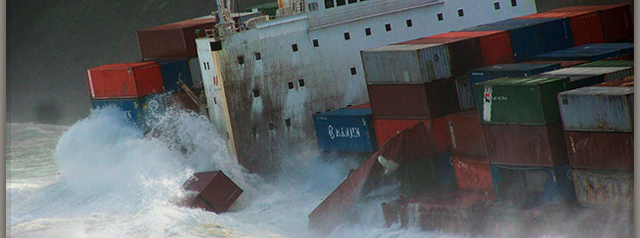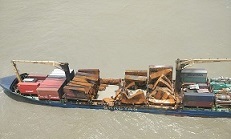It is difficult to give specific advice as the requirements can differ greatly from one country to another. Furthermore, the prospects of recovery can depend on the identity and reputation of the carriers, combined with specific problems according to the nature of the cargo concerned.
In general terms however, a recovery can be made providing that a claim is well documented with sufficient jointly signed receipts evidencing the quantity, quality and condition of the cargo at each stage of transit.
High value cargoes of consumer goods (particularly electronic goods and tools) are usually containerised and are frequently targets for pilferage by customs or theft, often by armed hijacking during inland transit. In some countries, these thefts have been known to occur with the collusion of the driver and consignee.
Sometimes, pilferage occurs during the inland transit by means of the removal of the container door hinges. The cargo is removed and the doors are then replaced without any obvious sign of tampering. Consequently, since the container arrives with the seal intact, there is no proof of where the loss occurred. Similarly, we have seen cases where the seal has been cut and subsequently replaced and glued. Evidence is only apparent through extremely close inspection. In these cases, it will appear as if the cargo was short-shipped.
Since the cargo can be removed from a container without leaving any trace of theft, each carrier will maintain that there is no definitive proof that the loss occurred while in their care. That being the case, the only precise way to determine where a pilferage may have occurred is to ensure that the container weight is accurately measured at each point of delivery and clearly documented at each stage of the transit. All deliveries must be properly receipted.
Any significant changes in weight should be immediately reported and a joint survey carried out without delay. The appointed surveyor should be instructed to take detailed photographs of the cargo stowage and of the container seals and hinges.
The only way to protect against such losses would be to insure for the sea transit only however, we realise that this is impracticable. Nevertheless, in cases of extremely high value cargo where theft is anticipated, we can only recommend that any inland transit should be subjected to extremely high premiums with the additional requirement that the container is escorted by armed guard.
As you will see, the complexities vary greatly from case to case. In large claims, we would therefore always recommend that documents are forwarded to us prior to settlement with your assured in order that we can advise properly, to ensure the correct outcome and complete documentation while also protecting your position insofar as any potential recovery is concerned.
Claims Settling Department








